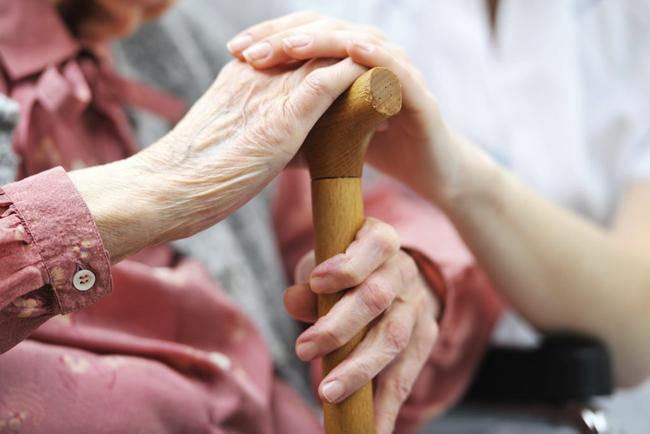NURSE'S LETTER: aged care more about business than care
AN AGED care nurse has written a stark account of the industry, where maximising profit is the biggest focus and care outcomes come second.

Central Queensland
Don't miss out on the headlines from Central Queensland. Followed categories will be added to My News.
A BUNDABERG aged care nurse has written an open letter in the wake of allegations against Kepnock Grove aged care facility, where she was formerly employed. Below is a stark account in her own words of a broken industry model focused more on maximising funding than on care outcomes for its patients. It is a cry for help to the Federal Government to reform a profit-based structure that is failing the most vulnerable elderly people in our communities.
I HAVE worked in aged care as a registered nurse in Bundaberg, including Kepnock Grove, and I am outraged at recent media reports. I don't deny the centre manager was under pressure to ensure that a dollar was stretched, and I don't deny she was under pressure to ensure "reports" were kept at a minimum. This was even before Carinity became owners.
The trouble is, aged care is a business.
And when it comes to being a business, it needs to make a profit to make other people happy and keep their bank balances happy. When costs escalate in an aged care facility, managers are under pressure to reach "low goals"- to spend less and save money.
I know of other facilities who give bonuses to senior staff if they haven't spent as much money on incontinence aids. Who suffers? Not management. In truth, the government and the leading bodies who oversee and organise aged care don't live it.
They are young and healthy, and suffer from minimal disease. The ones who make the rules have no idea how hard it is to live by these rules. Our elderly are told nursing homes are safe. They are encouraged to fork over thousands of dollars for the privilege of living in one.
But again and again, they suffer the lack of care promised to them. There is only so much carers can do under the restraints of dealing with an ever-decreasing budget to work with.
Yes, decreasing. Remember that $1 has to stretch to make $10 or more.
At another Bundaberg aged care facility (not Kepnock Grove), carers were told to turn incontinence aids around so the "wet" bit went to the back. That ensured "maximum fill".
Who suffered?
That venture compounded into residents suffering from painful incontinence dermatitis, entailing the use of special creams (which cost money), special wipes (which cost money), frequent turns (which cost staff time).
But the cost of incontinence aids went down and the carers got in trouble for not giving adequate care.
Who suffered?
Aged care is a harsh environment to live and to work in. People want profit.
The current ratio of care is also geared to minimal cost. If one staff member can look after 20 residents, then that is what happens.
If there is a fall, who gets the blame? The carer.
This leads to the lack of reporting, because people avoid getting into trouble. The more reports, the more trouble.
But who started this roller coaster? Not the carer. Not the resident.
Shortcuts are taken because of unrealistic care times. The Aged Care Funding Instrument (which determines the subsidies paid to aged care services) has turned this into a "time trouble" nightmare.
Can the resident brush their own hair? Yes? No funding. Can they brush their own teeth? Yes? No funding.
Medications are a nightmare. Hospitals receive these patients on multiple medications that have impacted on their health, and medication reviews often withdraw some medications that are doing damage and causing multiple admissions.
But the fewer medications a resident is on, the less funding is received.
So these patients' GPs are frequently contacted, informed how stupid the consultants and their teams are at the hospital, and the GP recommences the previously ceased medications.
I know. I was told to do it. It went against the grain, but I had to do as I was directed by the care manager. That or lose my job.
Again, they are under pressure to gain maximum funding. It's not their fault, it's the system.
Again, the people who make the rules have no idea about the pressures people are put under.
Time restraints are another problem. To manage a medication round for a lot of residents, I would have to start 30 minutes before my official start time just to ensure everything got done, and even then sometimes things would be missed.
Unrealistic time restraints are just setting everybody up for failure and if "failure" gets reported to the governing body, who gets in trouble? The nursing staff.
Wound care is also a poor area, through nobody's fault except funding.
At one facility where I worked, we had wound care kits that were essentially tackle boxes with some normal saline, cotton gauze and bandages. For complex wounds, we were told "it's basic bush nursing" and we had to do what we could with what we had.
Funding ensured that better wound-care products were only used when there was absolutely no other option.
Who suffered?
So until the companies realise they are at the root of the problem, and until the government realises it has to help our elderly, nothing will change.
There will still be finger pointing, delegating blame and denial of charges.
It's happening everywhere. Open your eyes.
I have previously reported facilities for lack of care, but somehow the bosses get wind of an impending "impromptu" visit.
Carers are forewarned and told to behave. Amazingly, the good stuff comes out - a "surprise" meal full of quality foods for the residents, extra staff - it all looks good and so they get away with it.
Conspiracy? What do you think?
And who suffers?
Clarification
The nurse, who formerly worked at Kepnock Grove, Bundaberg, had only worked 10 months of her nine-year career at the facility.
Concerns she raised were about the aged care sector as a whole, not any specific facility.


